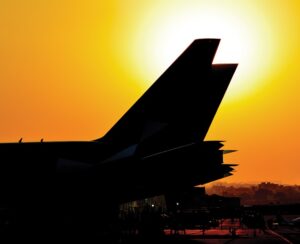Amendments in aircraft rules of 1937
News: The Aircraft Rules of 1937, originally enacted under the Indian Aircraft Act of 1934, have undergone several amendments over the years to adapt to the evolving aviation industry, technological advancements, and changing regulatory requirements.
These amendments have been made to enhance safety, streamline procedures, and keep pace with international standards. Here’s an overview of some key amendments:
- Unmanned Aircraft Systems (UAS): With the growth of drones and unmanned aircraft, amendments have been introduced to regulate their operation and address safety concerns. This includes the classification and registration of drones, as well as specific rules for their operation.
- Environmental Concerns: Amendments have been made to address environmental issues, particularly in the context of emissions and noise pollution. These rules promote sustainable aviation practices and compliance with international environmental agreements.
- Economic Regulation: The Aircraft Rules have been amended to incorporate changes in economic regulations, such as tariffs, charges, and fees for various aviation services, to reflect market dynamics and ensure fair competition.
- Air Traffic Management: Rules governing air traffic management, air navigation, and communication systems have been updated to enhance efficiency and safety in Indian airspace.
- Regulatory Processes: Several amendments focus on simplifying and modernizing regulatory processes, including digitalization of documentation and the introduction of online platforms for filing applications, making it easier for stakeholders to interact with the regulatory authorities.
- Safety and Security: Amendments have been made to align with international safety and security standards set by organizations like the International Civil Aviation Organization (ICAO). These changes cover areas such as aircraft certification, airworthiness, and safety management systems.
- Licensing and Training: The rules related to pilot licensing, training, and qualifications have seen substantial changes to ensure that pilots and flight crews meet the highest safety standards. These amendments also encompass the recognition of foreign licenses and certifications.
- Airworthiness: Aircraft design, maintenance, and certification standards have been updated to ensure the airworthiness of aircraft operating in India. These amendments include requirements for regular inspections, maintenance practices, and adherence to technical standards.
These amendments are critical to ensure that India’s aviation sector remains competitive, safe, and efficient. They reflect the nation’s commitment to align with global aviation standards and promote sustainable growth in the aviation industry. The constant evolution of the Aircraft Rules is essential to adapt to emerging technologies and maintain the highest levels of safety and efficiency in aviation operations.




